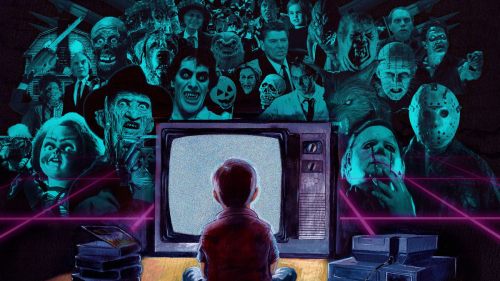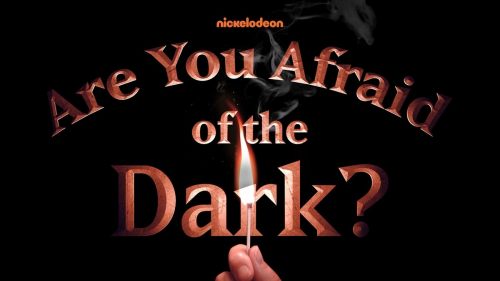Beyond Fest Review: THE LIVING DEAD AT THE MANCHESTER MORGUE
For those unfamiliar, from February of 2007 until March of 2013 I watched - and reviewed - at least one horror movie every single day (OK, I missed one, less than two weeks in. Growing pains?), for a total of 2500 reviews in a row. As you might expect, that means a lot of films were not that great, and an even greater number were simply so forgettable that I'd have trouble recalling enough details by the time it came to write the review, let along months or even years later. Long story short, if a movie stuck with me enough to remember chunks of it clearly a few years down the road, chances are it's one worth checking out.
One such film is The Living Dead at the Manchester Morgue, a 1974 Italian-Spanish co-production directed by Jorge Grau that has been released under many other titles (I saw it originally as Let Sleeping Corpses Lie). It's a title I refer to quite often, particularly whenever someone says they like zombie movies but are tired of the usual "____ of the Dead" Romero wannabes and (worse) zom-com Edgar Wright ripoffs. But I had never seen it on the big screen, so despite my busy schedule having me eschew most of the repertory programming at this year's Beyond Fest, when they announced they'd be showing a 4K restoration of the film I happily made an exception. Not only did I want to see the film again anyway (as it had been a decade and those strong memories were fading somewhat), but I knew the Beyond Fest crowd would be ideal for this offbeat but very good undead entry.
Our hero is George (Ray Lovelock), an antique dealer who is driving his motorcycle into the countryside to visit from friends when he stops at a gas station. The car in front of him at the pump, driven by Edna (Cristina Galbo) backs into his bike and damages it, so George does what any normal person would do: demand she let him drive her car to get to his destination. Since she says she's tired, she agrees pretty quickly, but begs him to at least drop her off at her sister's and then keep her car until his bike is fixed. However, when they get to her sister's area they get a bit lost, and when George stops to ask for directions, she is attacked by someone who fits the description of a local who died a week earlier.
Other strange things happen, and before long it's clear that, yes, the dead are returning to life - and it seems to be related to an experimental bug-killing pesticide that a big truck is injecting into the ground nearby. Normally our heroes would just leave, but after another attack leaves someone dead, the local Inspector (Arthur Kennedy) suspects George and Edna are the murderers and tries locking them up, so it's on them to find proof of their innocence before they're taken out by either the cops or the zombies, who are increasing in number.

I think the reason the film sticks out is simply because it was one of the first zombie movies to come along post-Night of the Living Dead, without an established formula or even set of rules just yet. It usually takes two successful horror movies of a type for everyone to start ripping them off, after all, which meant the floodgates didn't really open until Romero himself went back to the table with Dawn of the Dead in 1978. So the ones in the ten years between tend to feel a bit "off" in ways that are good or bad, depending on your taste.
In Manchester Morgue's case, we can start with the finite number of zombies that appear in the film, without a usual "and then all hell breaks loose and dozens of them swarm the house" kind off sequence. I'm not sure if ever see more than three in a given scene, and I'd estimate there are probably less than twenty in the entire film. But it's not a budgetary limitation - Grau doesn't have anyone look out the window and say "My God, there are hundreds of them!" without showing us any such thing (yes, I've seen movies that do this) - it's simply the nature of its plot. By explaining where the zombies come from and confining the infected area to an isolated town that only houses a dozen or so people anyway, there's just no reason for a big horde of the damn things.
Plus, it's basically a "man on the run trying to prove his innocence" kind of film than a traditional zombie one, as the cops close in on George as he runs around trying to both stop the pesticide guys from using their truck while also attempting to get something concrete he can show Kennedy's increasingly crazed Inspector. The ingredients are there for a standard "bunch of strangers hole up somewhere and fight each other as much as the zombies" kind of deal, but Grau and his writers aren't interested in letting anyone stay in one place for too long. And George and Edna are the only ones who interact with the other characters for the most part; I don't think Kennedy ever even sees the pesticide guys.
It's not without its slow spots, and if you're part of cancel culture you'll have a field day with some of George's actions because of your inability to recognize that older films are not supposed to be held up to modern standards. But for both the 1970s and the zombie sub-genre as a whole, it stands out for a number of reasons, most of them positive - something I find even more impressive as the "zombie" section in our streaming service of choice gets more and more glutted with anonymous junk. Synapse will be announcing the Blu-ray release soon (far as I know it's still on deck for 2019), I highly encourage keeping an eye out for it.



